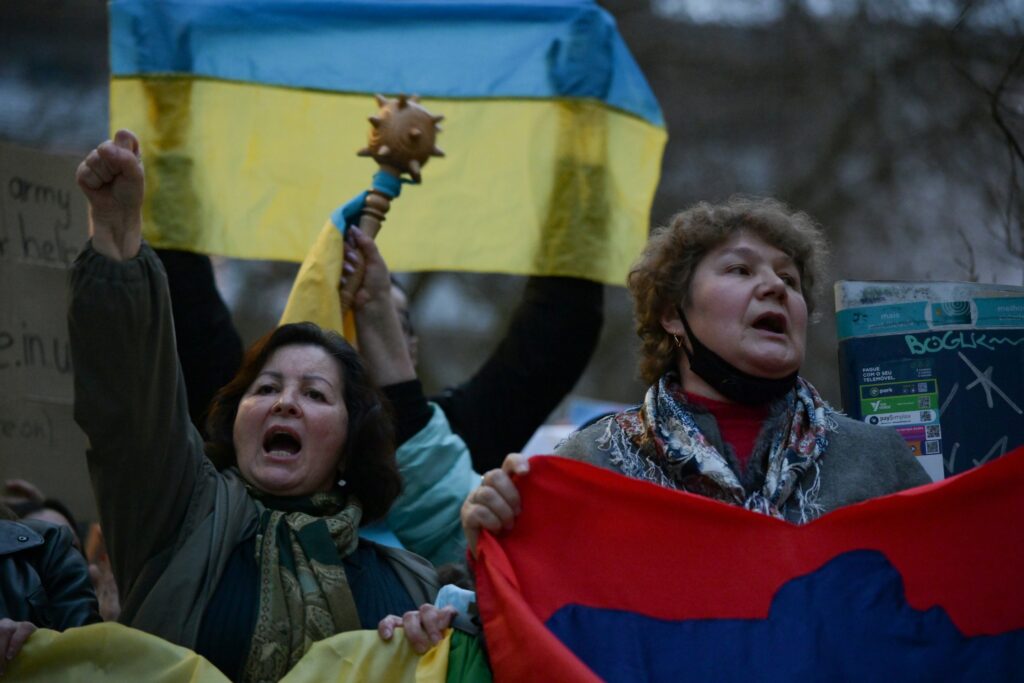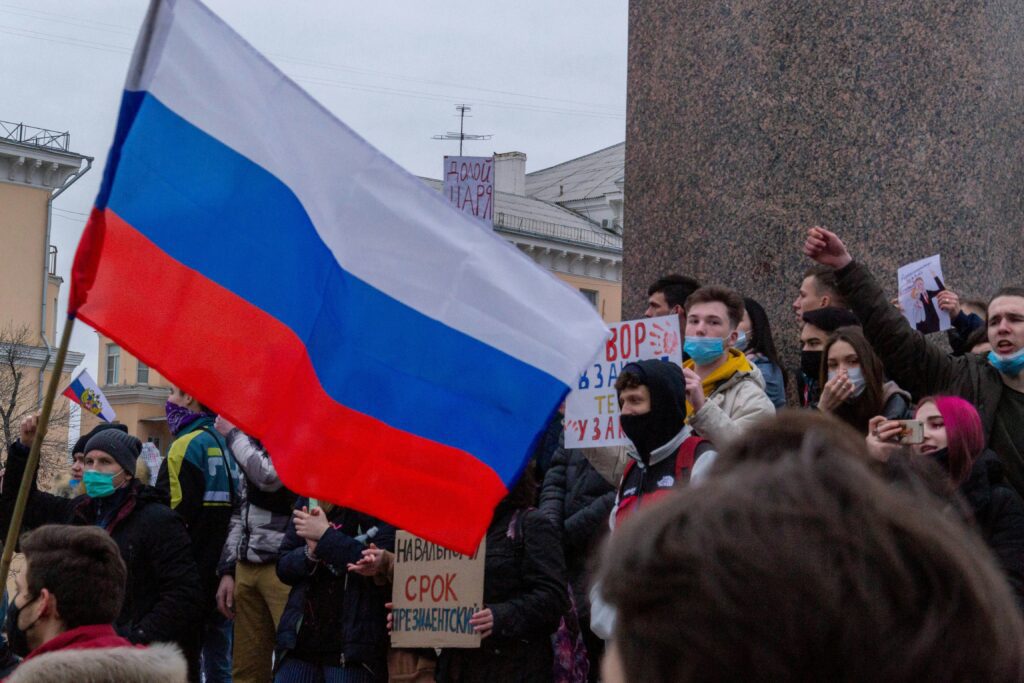
Welcome back, Lovelies!
It feels good to have you back here with me in the exploration of the Ukraine-Russia conflict. In the last post, we explored the history of this war. We looked at the key events that led to its start. Today, we turn our attention to the struggles of today. We’ll look at the battles, the strategies involved, and how this ongoing conflict affects real life.
Let’s dig into this complex and poignant chapter of history.
PRESENT-DAY SCUFFLES
Orange Revolution (2004–2005)
The Orange Revolution was a series of protests and political events in Ukraine. It took place from November 2004 to January 2005. The revolution started when many claimed there was fraud in the 2004 Ukrainian presidential election.
Key Events:
- Initial Election Results: In the 2004 presidential election, officials declared Viktor Yanukovych the winner first. He was the pro-Russian candidate. He beat the pro-Western candidate, Viktor Yushchenko. Many reports showed electoral fraud, ballot stuffing, voter intimidation, and other issues.
- Mass Protests: In response to the alleged election fraud, mass protests erupted in Kyiv and other major cities. The protests were peaceful. Demonstrators wore orange, which is Yushchenko’s campaign color. The protests drew hundreds of thousands of participants and lasted for several weeks.
- Supreme Court Decision: The Ukrainian Supreme Court stepped in. They ruled the election results invalid because of widespread fraud. The court ordered officials to hold a revote.
- Re-vote and Victory for Yushchenko: The re-vote took place on December 26, 2004, and Viktor Yushchenko emerged as the clear winner. Observers viewed Yushchenko’s victory as a big step for democracy and a closer link to Western Europe.
Euromaidan Protests (2013-2014)
The Euromaidan Protests, or the Revolution of Dignity, were protests in Ukraine. They started in November 2013 and went on into 2014. The protests started because many people were angry at President Viktor Yanukovych’s government. People felt upset after he turned down an association agreement with the European Union (EU) to get closer to Russia.
Key Events:
- Initial Spark: The protests started on November 21, 2013. This happened when President Yanukovych’s government said it would not sign an association agreement with the EU. Observers viewed this decision as a significant setback for Ukraine’s European integration aspirations.
- Mass Mobilization: Pro-EU protesters gathered at Maidan Nezalezhnosti (Independence Square) in Kyiv. This was in response to the government’s decision. The protests grew at a rapid pace. Participants sought stronger connections with the EU, democratic reforms, and an end to corruption.
- Escalation of Violence: In late November 2013, security forces used force to break up the protests. This violent crackdown led to an increase in the number of protesters and heightened tensions. Clashes between protesters and security forces became more frequent and intense.
- Occupation of Government Buildings: Protesters seized important government buildings in Kyiv and other cities. They demanded that President Yanukovych and his government resign. The protests spread to more regions in Ukraine, especially the western and central areas.
- February 2014 Clashes: The most significant and deadly clashes occurred in February 2014. On February 18, violence erupted in Kyiv, resulting in many casualties. The situation reached a critical point on February 20, when snipers fired on protesters, killing dozens and wounding many more.
- Ousting of Yanukovych: Following the violence, President Yanukovych left Kyiv on February 21, 2014. He then went into exile in Russia. The Ukrainian parliament voted to remove him from office and called for new elections. In May 2014, voters chose Petro Poroshenko as the new president after the authorities set up an interim government.

Russia’s annexation of Crimea (2014)
Russia’s annexation of Crimea in 2014 was a major shift in the Ukraine-Russia conflict. It also had significant effects on global politics. This event happened after Ukraine’s pro-Russian President, Viktor Yanukovych, was ousted during the Euromaidan protests.
Key Events:
- Military Operation: In late February 2014, Russian troops, called “little green men,” began taking over key sites in Crimea. These forces seized key locations. They included airports, military bases, and government buildings.
- Referendum: On March 16, 2014, Crimea held a controversial vote. Most voters reportedly favored joining Russia. The referendum took place with Russian military forces present. Ukraine and the global community called it illegitimate. They viewed it as a violation of international law.
- Annexation: On March 18, 2014, Vladimir Putin, the president of Russia, signed a treaty. This treaty formalized the addition of Crimea to the Russian Federation. This action faced strong criticism. The United States, the European Union, and other nations put economic sanctions on Russia.
- International Response: Ukraine and the world did not recognize Crimea’s annexation. The United Nations General Assembly passed a resolution. It affirmed Ukraine’s territorial integrity and declared the referendum invalid. The annexation hurt Russia’s ties with Western countries. It also raised tensions in the region.
War in Donbas (2014–present)
The War in Donbas, also known as the Donbas War, is a conflict in the Donetsk and Luhansk regions of eastern Ukraine. The war started in April 2014. This came after Russia took over Crimea. It also followed the removal of Ukraine’s pro-Russian president, Viktor Yanukovych.
Key Events:
- In March 2014, pro-Russian protests began in Donetsk and Luhansk. This happened after the Euromaidan protests and the annexation of Crimea. These areas are part of the Donbas region. Anti-revolution sentiments and support for closer ties with Russia drove these protests.
- Armed separatists backed by Russia crossed into Ukraine. They seized government buildings. Then, they declared the Donetsk People’s Republic (DPR) and Luhansk People’s Republic (LPR) as independent states. This led to conflict with Ukrainian forces.
- Military Operations: The Ukrainian military began efforts to take back occupied areas. The conflict saw intense fighting, with both sides suffering significant casualties. Key battles included the Battle of Donetsk Airport and the Battle of Debaltseve.
- In an attempt to establish a ceasefire and resolve the conflict, leaders signed the Minsk agreements in 2014 and 2015. The agreements called for a ceasefire. They also required the withdrawal of foreign armed groups and constitutional reforms. These reforms would recognize the special status of Donetsk and Luhansk. Yet, violations of the ceasefire were frequent, and the conflict continued.
- Russian Involvement: Russia secretly backed the separatists with troops and weapons. denied any direct involvement. The international community released a report. It condemned Russian military personnel and equipment in the conflict zone.
- Humanitarian Impact: The war in Donbas has caused many deaths, displaced many people, and led to widespread destruction. Thousands have died, and millions have left their homes. This includes both local and international displacement.
Escalation to Full-Scale War (2021–2022)
The conflict between Ukraine and Russia grew serious in late 2021 and early 2022. This led to Russia’s full-scale invasion. This escalation was a key moment in the conflict. It also had major effects on stability in the region and the world.
Key Events:
- Military Buildup: In late 2021, Russia began to deploy many troops and military equipment near the borders of Ukraine. This buildup had thousands of soldiers, tanks, artillery, and other military assets. The presence of these forces raised alarms among Ukraine and its Western allies.
- Diplomatic Tensions: In late 2021 and early 2022, efforts to ease tensions continued. Russia made demands to the West. These included a ban on Ukraine joining NATO and a call for NATO forces to leave Eastern Europe. NATO and Western countries rejected these demands.
- Invasion Announcement: On February 24, 2022, Russian President Vladimir Putin announced a “special military operation” in Ukraine. He said the operation was needed to “demilitarize and de-Nazify” Ukraine. He also aimed to protect the Russian-speaking people in the Donbas region. In his announcement, Putin made many false claims about the Ukrainian government and its actions.
- Initial Assault: The invasion began with a series of missile strikes and ground assaults on many fronts. Russian forces moved towards Kyiv from three areas: Belarus in the north, Crimea to the south, and the Donbas region in the east. The initial assault aimed to capture key cities and infrastructure in a swift manner.
- Ukrainian Resistance: Despite the Russian military’s power, Ukrainian forces remained strong and fought back bravely. The defense of Kyiv, in particular, became a symbol of Ukrainian resilience. Western countries gave Ukraine important military aid. This included weapons and intelligence support to strengthen its defense.
- Humanitarian Crisis: The invasion caused a huge humanitarian crisis. Millions of Ukrainians have fled their homes. By April 2023, over 8.2 million Ukrainians had left their country. This caused Europe’s biggest refugee crisis since World War II. The conflict also resulted in significant civilian casualties and widespread destruction.
The Ukraine-Russia war leaves lasting echoes in history. Its complexities need closer examination. In the next post, we will explore key battles that shaped this conflict. We’ll explore why both sides act as they do. We’ll also examine the roles of nations and international organizations in this ongoing saga. Stay tuned as we unravel the layers of this monumental chapter in global affairs.


Pingback: Ukraine – Russia War: How We Got Here - FestusAyomikun